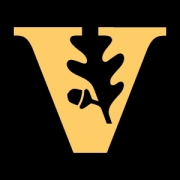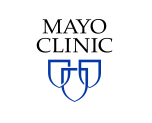Comparing Three Different Combination Chemotherapy Regimens in Treating Patients With Relapsed or Refractory Acute Myeloid Leukemia
| Status: | Completed |
|---|---|
| Conditions: | Blood Cancer, Women's Studies, Hematology |
| Therapuetic Areas: | Hematology, Oncology, Reproductive |
| Healthy: | No |
| Age Range: | 18 - 65 |
| Updated: | 4/21/2016 |
| Start Date: | October 2008 |
| End Date: | October 2014 |
A Phase II Randomized Trial of Carboplatin and Topotecan; Flavopiridol, Mitoxantrone and Cytosine Arabinoside; and Sirolimus, Mitoxantrone, Etoposide and Cytosine Arabinoside for the Treatment of Adults With Primary Refractory or Initial Relapse of Acute Myelogenous Leukemia (AML)
This randomized phase II trial is comparing three different combination chemotherapy
regimens to see how well they work in treating patients with relapsed or refractory acute
myeloid leukemia. Drugs used in chemotherapy work in different ways to stop the growth of
cancer cells, either by killing the cells or by stopping them from dividing. Giving more
than one drug (combination chemotherapy) may kill more cancer cells. It is not yet known
which combination chemotherapy regimen is more effective in treating patients with relapsed
or refractory acute myeloid leukemia.
regimens to see how well they work in treating patients with relapsed or refractory acute
myeloid leukemia. Drugs used in chemotherapy work in different ways to stop the growth of
cancer cells, either by killing the cells or by stopping them from dividing. Giving more
than one drug (combination chemotherapy) may kill more cancer cells. It is not yet known
which combination chemotherapy regimen is more effective in treating patients with relapsed
or refractory acute myeloid leukemia.
PRIMARY OBJECTIVES:
I. To determine the complete remission (CR) + cytogenic complete remission (CRc) +
morphologic complete remission with incomplete blood count recovery (CRi) rate of
carboplatin and topotecan; flavopiridol, mitoxantrone and cytosine arabinoside and
sirolimus, mitoxantrone, etoposide and cytosine arabinoside in adult patients with
refractory or relapsed acute myeloid leukemia (AML).
NOTE: Since the CRc patients are required to be either CR or CRi, we only report the rate of
CR+CRi in the results section.
II. To determine the rate of treatment failure of these regimens. III. To determine the
incidence and severity of toxicities of these regimens. IV. To analyze the predictive value
of blast cell properties that have been suggested to determine response. (Correlative
laboratory studies) V. To determine whether pretreatment levels of B-cell chronic
lymphocytic leukemia (CLL)/lymphoma 2 (Bcl-2) or, alternatively, whether a therapy-induced
change in topoisomerase I levels correlates with response to this regimen. (Correlative
laboratory studies) VI. To assess the impact of clonal evolution by comparing cytogenetic
abnormalities at the time of relapse with those at initial diagnosis and correlating these
abnormalities and changes with response to the treatment regimens in this protocol.
(Cytogenetic and fluorescent in situ hybridization [FISH] studies) VII. Panel FISH studies
for common AML rearrangements will be performed on relapse AML specimens to determine the
presence of these recurrent AML abnormalities and to evaluate for subtle additional
abnormalities consistent with clonal evolution in these relapse specimens. (Cytogenetic and
FISH studies)
OUTLINE: Patients are randomized to 1 of 3 treatment arms.
INDUCTION THERAPY:
ARM A: Patients receive carboplatin and topotecan hydrochloride intravenously (IV)
continuously over 24 hours on days 1-5.
ARM B: Patients receive alvocidib IV over 4.5 hours once daily (QD) on days 1-3, cytarabine
IV continuously over 72 hours on days 6-8, and mitoxantrone hydrochloride IV over 1-2 hours
on day 9.
ARM C: Patients receive sirolimus orally (PO) QD on days 2-9, mitoxantrone hydrochloride IV
over 15 minutes QD, etoposide IV over 1 hour QD, and cytarabine IV over 3 hours QD on days
4-8 or 5-9. (Closed to accrual)
After completion of induction therapy, patients in all arms undergo bone marrow aspirate and
biopsy. Patients with persistent leukemia (i.e., leukemic blasts >= 10%) are removed from
study and are offered alternative therapy at the discretion of the investigator. Patients
who achieve CR proceed to consolidation therapy or receive alternative therapy at the
discretion of the investigator.
CONSOLIDATION THERAPY: Beginning within 2-6 weeks after documentation of CR, patients may
receive up to 2 additional courses of the same treatment they received during induction
therapy. Courses repeat every 4-10 weeks in the absence of disease progression or
unacceptable toxicity.
After completion of study therapy, patients are followed periodically for up to 3 years.
I. To determine the complete remission (CR) + cytogenic complete remission (CRc) +
morphologic complete remission with incomplete blood count recovery (CRi) rate of
carboplatin and topotecan; flavopiridol, mitoxantrone and cytosine arabinoside and
sirolimus, mitoxantrone, etoposide and cytosine arabinoside in adult patients with
refractory or relapsed acute myeloid leukemia (AML).
NOTE: Since the CRc patients are required to be either CR or CRi, we only report the rate of
CR+CRi in the results section.
II. To determine the rate of treatment failure of these regimens. III. To determine the
incidence and severity of toxicities of these regimens. IV. To analyze the predictive value
of blast cell properties that have been suggested to determine response. (Correlative
laboratory studies) V. To determine whether pretreatment levels of B-cell chronic
lymphocytic leukemia (CLL)/lymphoma 2 (Bcl-2) or, alternatively, whether a therapy-induced
change in topoisomerase I levels correlates with response to this regimen. (Correlative
laboratory studies) VI. To assess the impact of clonal evolution by comparing cytogenetic
abnormalities at the time of relapse with those at initial diagnosis and correlating these
abnormalities and changes with response to the treatment regimens in this protocol.
(Cytogenetic and fluorescent in situ hybridization [FISH] studies) VII. Panel FISH studies
for common AML rearrangements will be performed on relapse AML specimens to determine the
presence of these recurrent AML abnormalities and to evaluate for subtle additional
abnormalities consistent with clonal evolution in these relapse specimens. (Cytogenetic and
FISH studies)
OUTLINE: Patients are randomized to 1 of 3 treatment arms.
INDUCTION THERAPY:
ARM A: Patients receive carboplatin and topotecan hydrochloride intravenously (IV)
continuously over 24 hours on days 1-5.
ARM B: Patients receive alvocidib IV over 4.5 hours once daily (QD) on days 1-3, cytarabine
IV continuously over 72 hours on days 6-8, and mitoxantrone hydrochloride IV over 1-2 hours
on day 9.
ARM C: Patients receive sirolimus orally (PO) QD on days 2-9, mitoxantrone hydrochloride IV
over 15 minutes QD, etoposide IV over 1 hour QD, and cytarabine IV over 3 hours QD on days
4-8 or 5-9. (Closed to accrual)
After completion of induction therapy, patients in all arms undergo bone marrow aspirate and
biopsy. Patients with persistent leukemia (i.e., leukemic blasts >= 10%) are removed from
study and are offered alternative therapy at the discretion of the investigator. Patients
who achieve CR proceed to consolidation therapy or receive alternative therapy at the
discretion of the investigator.
CONSOLIDATION THERAPY: Beginning within 2-6 weeks after documentation of CR, patients may
receive up to 2 additional courses of the same treatment they received during induction
therapy. Courses repeat every 4-10 weeks in the absence of disease progression or
unacceptable toxicity.
After completion of study therapy, patients are followed periodically for up to 3 years.
Inclusion Criteria
Induction Therapy:
- Patients must have morphologic proof (from bone marrow aspirate, smears or touch
preps of marrow biopsy) of acute myelogenous leukemia (AML) with >= 10% blasts within
two weeks prior to induction randomization
- NOTE: Patients must be registered to E3903 (Ancillary Laboratory Protocol for
Collecting Diagnostic Material on Patients Considered for Eastern Cooperative
Oncology Group [ECOG]-American College of Radiology Imaging Network [ACRIN]
Treatment Trials for Leukemia or Related Hematologic Disorders) and must undergo
eligibility testing for the study by multiparameter flow cytometry
- All immunodiagnoses are eligible for E1906, except acute promyelocytic leukemia
(APL) (proven by the presence of promyelocytic leukemia (PML)/retinoic acid
receptor (RAR) alpha); cases of APL can become eligible if the patient is
ineligible for an ECOG-ACRIN APL trial or if all-trans retinoic acid or arsenic
trioxide is not planned as part of the treatment regimen
- Patients must qualify for one of the following:
- Relapse =< 6 months after first CR, dated from documentation of CR to
documentation of relapse
- Relapse between 6-12 months after first CR
- Refractory to conventional initial induction chemotherapy (=< 2 courses) or to first
reinduction (=< 1 course)
- Normal cardiac ejection fraction by pretreatment multi gated acquisition scan (MUGA)
or echocardiogram within 4 weeks prior to randomization (resting ejection fraction >=
50% or >= 5% increase with exercise), shortening fraction by echocardiogram >= 24%,
or to within the normal range of values for the institution
- Prior treatment to doses of any of the following:
- < 300 mg/m^2 of doxorubicin
- < 300 mg/m^2 of daunorubicin
- < 100 mg/m^2 of idarubicin
- < 100 mg/m^2 of mitoxantrone
- Serum creatinine =< 2.0 mg/dL
- Serum direct bilirubin < 2.0 mg/dL
- Serum glutamic oxaloacetic transaminase (SGOT) (aspartate aminotransferase [AST]) < 4
x upper limit of normal
- The above stipulation for normal hepatic function does not apply if liver
dysfunction is due to leukemia infiltration
- Prior to study entry, patients must have recovered from toxicities of prior
chemotherapy and radiotherapy; for patients refractory to induction chemotherapy
(patient subgroup outlined above), marrow documentation of residual leukemia post
chemotherapy and qualification for remaining eligibility criteria are needed prior to
study entry (this does not require >= 30% marrow blasts to be evident but a minimum
of 10% blasts must be present in the marrow)
- NOTE: Hydroxyurea is permitted within 4 weeks of study entry
- ECOG performance status 0, 1 or 2
- Patients with a history of central nervous system (CNS) leukemia are eligible if
there is documentation of no current CNS involvement on cerebrospinal fluid (CSF)
examination, (i.e., negative CSF by lumbar puncture)
Consolidation therapy:
- Patients must have an ECOG performance status 0, 1 or 2
- Patients must have documented CR
- Patients must have an absence of infection or have infection controlled by
antibiotics; patients who are septic will be excluded
- Patients must have a serum creatinine clearance > 50 cc/minute
- Patients must have a serum direct bilirubin < 2.0 mg/dl and alkaline phosphatase and
SGOT (AST) < 4 x upper limits of normal
- Patients must have a normal cardiac ejection fraction by MUGA or echocardiogram prior
to consolidation (resting ejection fraction >= 50% or >= 5% increase with exercise),
shortening fraction by echocardiogram >= 24%, or to within normal range of values for
the institution prior to the first and second cycle of consolidation for arms B and C
Exclusion Criteria
Induction therapy:
- Patients who have relapsed > 1 year after achieving first CR or are in >= second
relapse
- Patients who have had a prior allogeneic OR autologous stem cell transplant
- History of recent myocardial infarction (within three months), uncontrolled
congestive heart failure, or uncontrolled cardiac arrhythmia
- Prior treatment with carboplatin, topotecan, flavopiridol, or sirolimus
- Pregnant or breast feeding. Women of childbearing potential and sexually active males
should use an accepted and effective method of contraception
- Intercurrent organ damage or medical problems that would prohibit therapy; no active
or unresolved infection
- Current evidence of invasive fungal infection; such evidence includes positive blood
or deep tissue cultures or stains
- Have another (i.e., prior) tumor which is currently active and likely to interfere
with the patient's treatment for AML or which is likely to compromise the patient's
morbidity or mortality substantially
Consolidation therapy:
- Intercurrent organ damage or medical problems that will jeopardize the outcome of
therapy
- For arms B and C, patients have exceeded the following anthracycline doses or their
equivalents:
- < 300 mg/m^2 of doxorubicin
- < 300 mg/m^2 of daunorubicin
- < 100 mg/m^2 of idarubicin
- < 100 mg/m^2 of mitoxantrone
We found this trial at
20
sites
Click here to add this to my saved trials
University of Alabama at Birmingham The University of Alabama at Birmingham (UAB) traces its roots...
Click here to add this to my saved trials
Tufts Medical Center Tufts Medical Center is an internationally-respected academic medical center – a teaching...
Click here to add this to my saved trials
Vanderbilt-Ingram Cancer Center The Vanderbilt-Ingram Cancer Center, located in Nashville, Tenn., brings together the clinical...
Click here to add this to my saved trials
Click here to add this to my saved trials
Click here to add this to my saved trials
Click here to add this to my saved trials
Geisinger Medical Center Since 1915, Geisinger Medical Center has been known as the region’s resource...
Click here to add this to my saved trials
Click here to add this to my saved trials
500 University Dr
Hershey, Pennsylvania 17033
Hershey, Pennsylvania 17033
(717) 531-6955

Penn State Milton S. Hershey Medical Center Penn State Milton S. Hershey Medical Center, Penn...
Click here to add this to my saved trials
Mayo Clinic Florida Thousands of people come to Mayo Clinic in Jacksonville, Fla., annually for...
Click here to add this to my saved trials
Lewistown Hospital Geisinger-Lewistown Hospital, non-profit organization, is a 123-bed acute care community hospital serving the...
Click here to add this to my saved trials
600 Highland Ave
Madison, Wisconsin 53792
Madison, Wisconsin 53792
(608) 263-6400

University of Wisconsin Hospital and Clinics UW Health strives to meet the health needs of...
Click here to add this to my saved trials
9200 W Wisconsin Ave
Milwaukee, Wisconsin 53226
Milwaukee, Wisconsin 53226
(414) 805-3666

Froedtert and the Medical College of Wisconsin Froedtert Health combines with the Medical College of...
Click here to add this to my saved trials
Mayo Clinic Arizona Mayo Clinic in Arizona provides medical care for thousands of people from...
Click here to add this to my saved trials
Click here to add this to my saved trials
Geisinger Medical Group Geisinger is an integrated health services organization widely recognized for its innovative...
Click here to add this to my saved trials
Mount Nittany Medical Center Mount Nittany Medical Center is a 260-bed acute care facility offering...
Click here to add this to my saved trials
1000 E Mountain Blvd
Wilkes-Barre, Pennsylvania 18711
Wilkes-Barre, Pennsylvania 18711
(570) 808-7300

Geisinger Wyoming Valley Over the last decade, Geisinger Wyoming Valley has nearly doubled in size,...
Click here to add this to my saved trials








